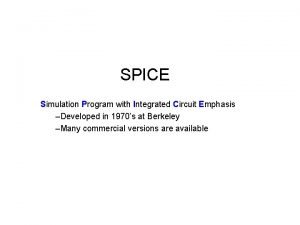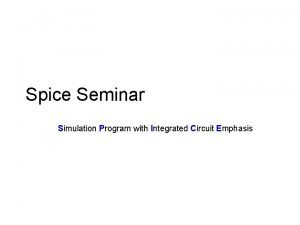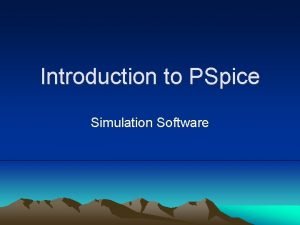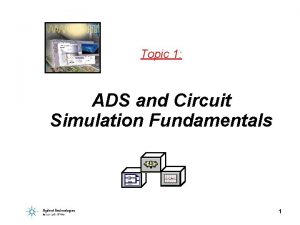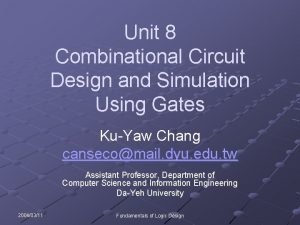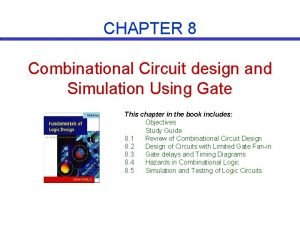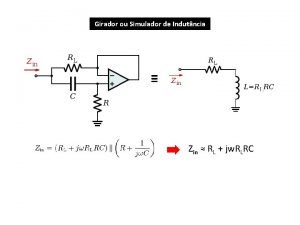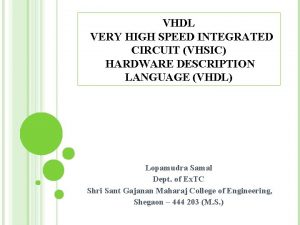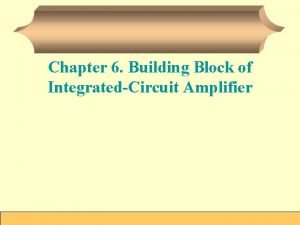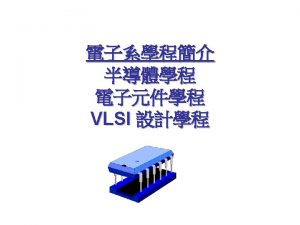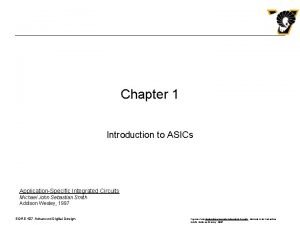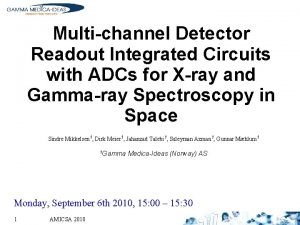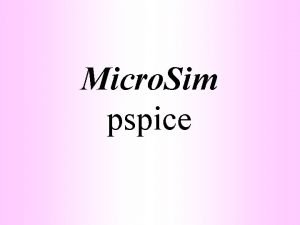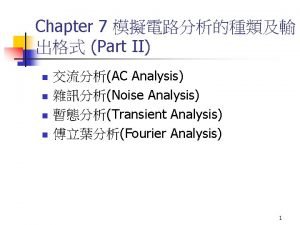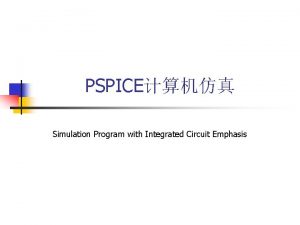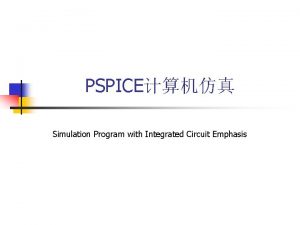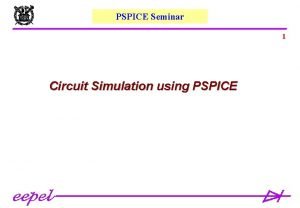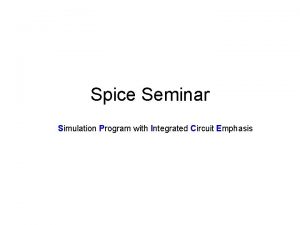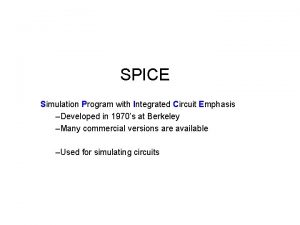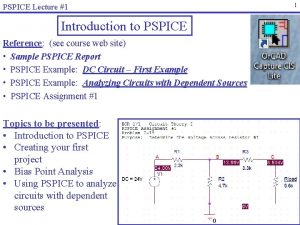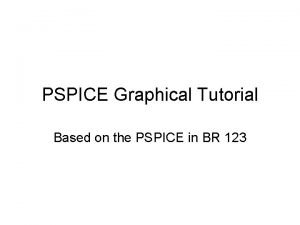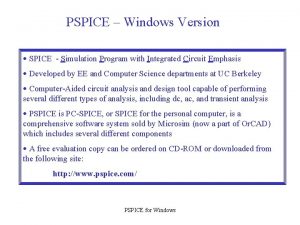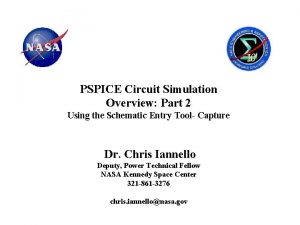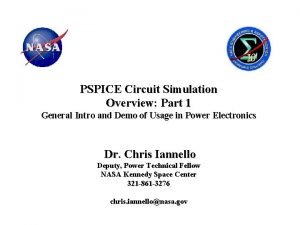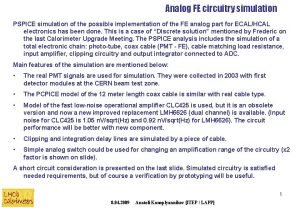PSPICE Simulation Program with Integrated Circuit Emphasis CH






















- Slides: 22

PSPICE计算机仿真 Simulation Program with Integrated Circuit Emphasis

CH 13 FOURIER SERIES 傅立叶级数

n Decay (衰减)

13. 1 Pulsed Sources

The pulse parameters are n n n n V 1 V 2 TD TR TF PW PER initial value (volts) pulsed value (volts) delay time (seconds) rise time (seconds) fall time (seconds) pulse width (seconds) period (seconds)

13. 2 Fourier Analysis n Example 22 illustrates a pulsed voltage source, the PSpice computation of the Fourier series coefficients, and the Probe computation of the Fourier transform coefficients.

Example 22 n n n Suppose that the pulsed waveform shown in Fig. 117 a is input to the RC circuit shown in Fig. 117 b. Use a Fourier series analysis of the input waveform to predict the frequency content of the output waveform for two values of C: 1 u. F and 10 u. F. Then use the Fourier transform mode in Probe to confirm the PSpice analysis and to display the frequency spectra graphically.

Solution n n We begin by computing the Fourier series components for the pulsed voltage signal shown in Fig. 117 a. Note that this waveform has two properties of symmetry: odd symmetry and half-wave symmetry. These symmetry properties tell us several things about the Fourier coefficients:

n n The dc component is 0. The Fourier series has only sine terms; the an coefficients are 0 for all values of n. Only the odd sine terms are nonzero; the bn coefficients are 0 for even n. Because of the form of the an‘s and the bn ‘s, the Fourier coefficients expressed in magnitude and phase-angle form are

Fig. 118 Sch

Fig. 119 Vpluse Property

Fig. 120 setting

Fig. 120 a

Fig. 121 output (Maybe wrong!)

Fig. 122 Probe

n n Trace/Fourier (Fig. 123 a) Plot/axis settings… (Fig. 123 b)

Fig. 123 a

Fig. 123 b

Fig. 123 fourier

Fig. 124 output

Fig. 125 10 u. F

Fig. 126 10 u. F-fourier
 Spice (simulation program with integrated circuit emphasis)
Spice (simulation program with integrated circuit emphasis) M u n p f
M u n p f Introduction to pspice
Introduction to pspice Contoh word for word translation
Contoh word for word translation Ads circuit simulation
Ads circuit simulation Bridged t network transfer function
Bridged t network transfer function Combinational circuit design and simulation using gates
Combinational circuit design and simulation using gates Combinational circuit design
Combinational circuit design Microwave circuit simulation software
Microwave circuit simulation software Antoniou inductance simulation circuit
Antoniou inductance simulation circuit Vhsic
Vhsic Integrated
Integrated Building blocks of integrated-circuit amplifiers中文
Building blocks of integrated-circuit amplifiers中文 Simbol integrated circuit
Simbol integrated circuit Lsi and msi
Lsi and msi Digital integrated circuits
Digital integrated circuits Application specific integrated circuits
Application specific integrated circuits Readout integrated circuit
Readout integrated circuit Shanghai integrated circuit industry
Shanghai integrated circuit industry Sejarah ic
Sejarah ic Micro in pspice
Micro in pspice Pspice vprint
Pspice vprint Pspice for ti
Pspice for ti
